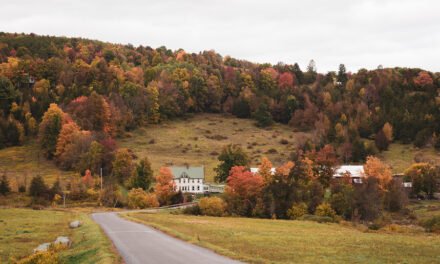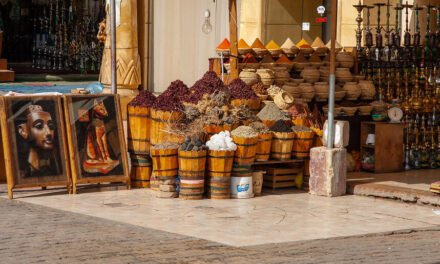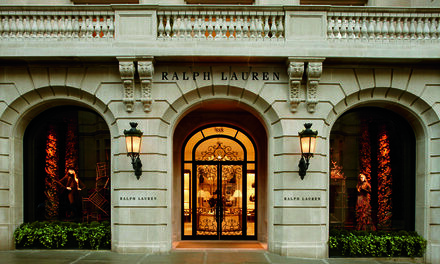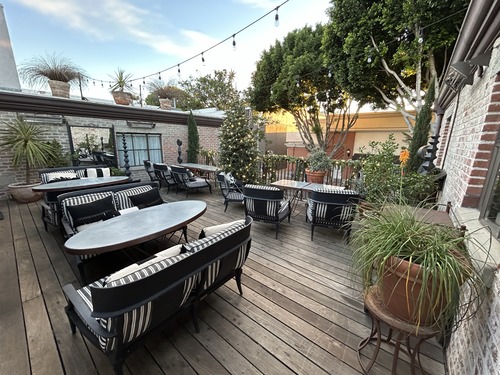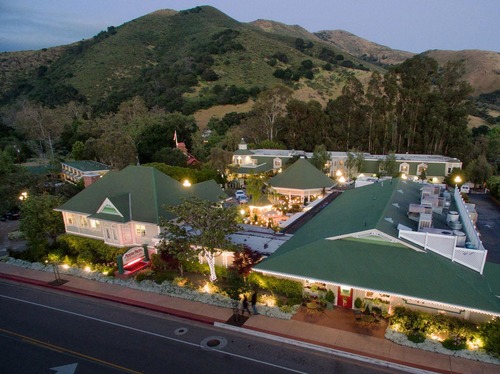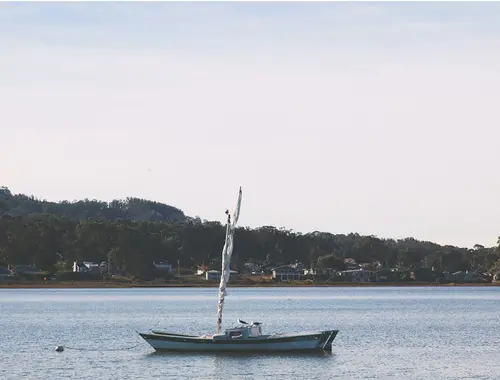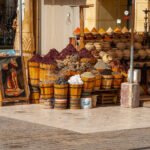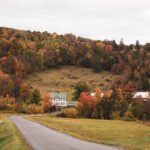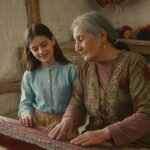SLO-cation
No need to travel far when this Central Coast gem awaits nearby.
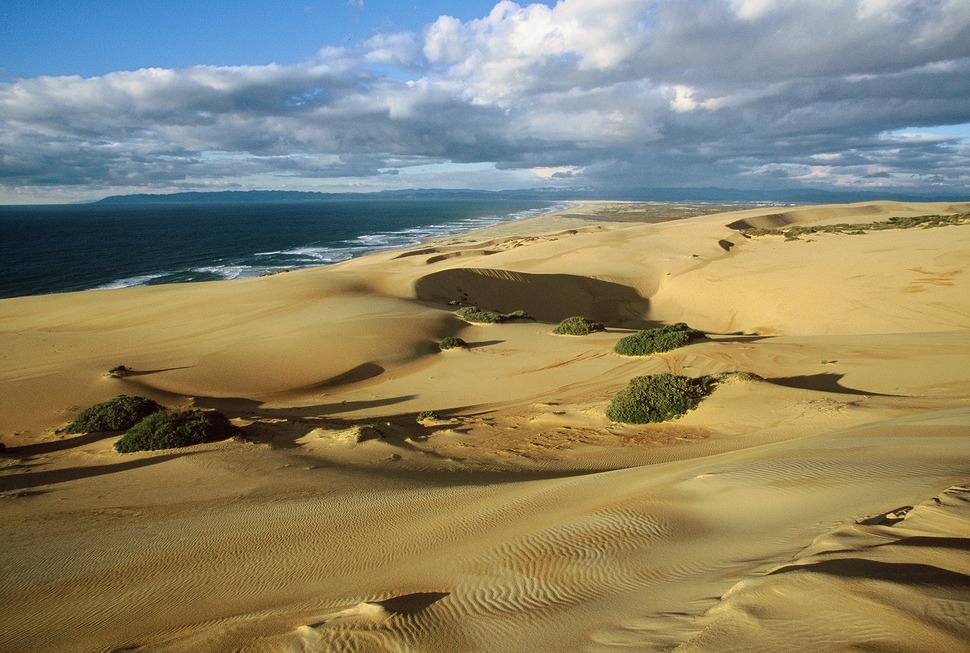
Guadalupe Nipomo Sand Dunes
Once above tree line, and after gaining the craggy summit and its 1,200-feet of elevation gain, I gazed 360-degrees at the rich diversity surrounding SLO. Cerro San Luis Mountain is well-known locally as one of the Nine Sisters, or Morros (Spanish for mountain), nine prominent volcanic peaks that line in a row all the way to the Pacific Ocean and Morro Bay, with Morro Rock being the last one to the northwest.
From my lofty perch, the mellow Central Coast city was just awakening as I scanned with my binoculars to the east/northeast. Behind me to the west, open lands and agricultural fields stretched to Morro Rock. My perch also revealed the tallest coastal sand dunes in the state at the Guadalupe – Nipomo Sand Dunes National Wildlife Refuge to the southwest.
There isn’t a bad time to visit San Luis Obispo. Its mild Mediterranean climate attracts visitors from all over to enjoy its natural wonders, fine dining, and eclectic accommodations.
I shared the trail with mountain bikers and trail runners, and after finishing my easy ramble on this sandstone-laden coastal peak, I said to myself, “Nothing is faraway here.” And before I knew it, I was quickly descending into downtown SLO.
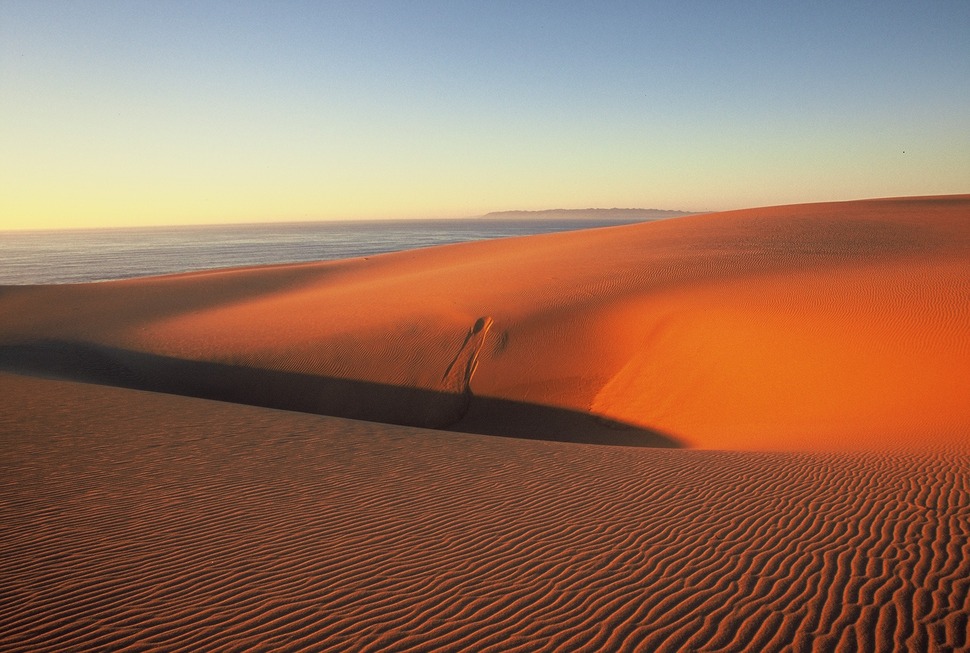
Guadalupe Nipomo Sand Dunes
What’s in a Smell?
Of course, before I clambered up Cerro San Luis Mountain, I made an easy pitstop at SLO Provisions. As soon as I walked into the naturally lit café, I was overwhelmed by the fresh smell of cinnamon rolls just pulled from the oven.
Located on the corner of Monterey Street, the all-day take-away is also a great eatery for dining inside. Rivaling those delicious cinnamon rolls was the intoxicating smell of freshly cut bacon. Needless to say, I was well satiated before hitting scenic Cerro San Luis Mountain.
Classically Cool
After getting off the dusty trail, I checked in at the historic Granada Hotel. Tucked away on 1130 Morro Street, the classic brick building with its original wood floors, has been a staple in SLO since 1922. For 46 years, up until 1968, Mr. & Mrs. Remage ran their hotel. It was a popular enclave for traveling actors and artists alike but, according to the Granada Hotel website, rooms were rented by the hour throughout the 1920s.
At one point the hotel became a low-income housing project up until 2012, when it was slated for demolition. The Nomada Hotel Group took control, and restored the iconic building, adding the Bistro restaurant, and adjoining speakeasy Night Cap bar. The Bistro has indoor and outdoor seating, the lighting was magical, and the staff was always friendly and accommodating.
While strolling the low-lit hallways of the Granada Hotel, I felt the nostalgia and history of the 1922 establishment. Yet, throughout the cozy, 17-room hotel, the walls are adorned with contemporary art and photography by local and international artists. There were two relaxing guest lounges within the hotel, and one more upstairs that’s an outside balcony overlooking Morro Street. These proved to be relaxing little escapes within the Granada, ideal for reading or working remotely.
Later in the day, I returned to the Granada and its adjoining restaurant, the Bistro. I savored the exquisite fried potatoes and pan-seared seabass, and for dessert the decadent peanut butter cake was a real topper. After dinner, I stepped across the hallway to the Night Cap, where I made the difficult choice over which martini to sip on before retiring to my cozy room.
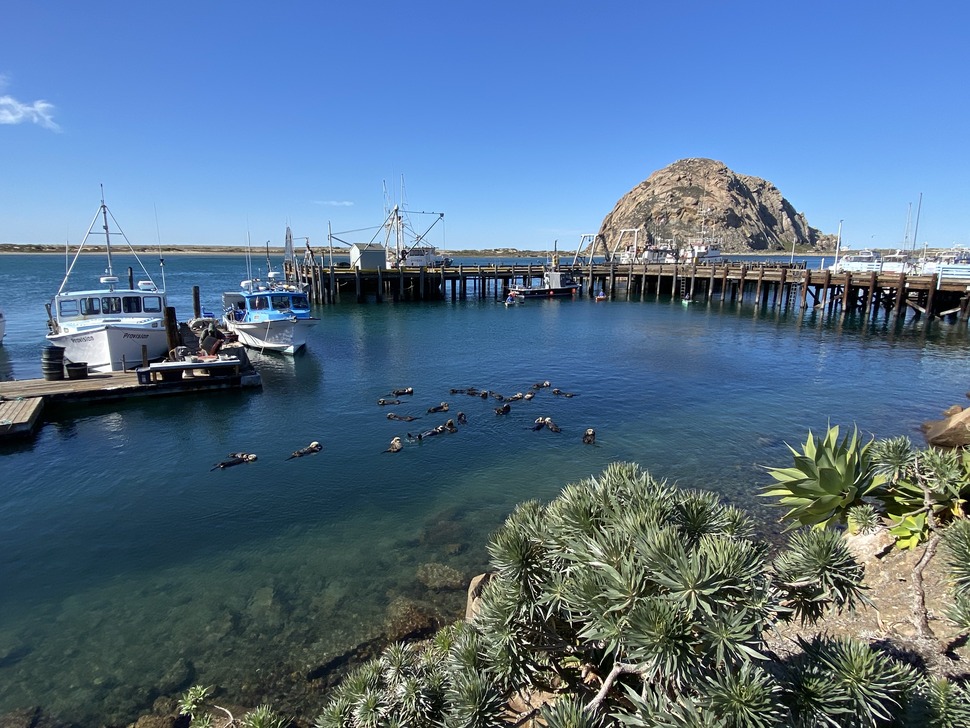
Morro Bay
Origins
The next morning, I started my day with a visit to the Mission San Luis Obispo de Tolosa. Founded in 1772, the mission’s architecture was something to behold, and there’s oodles of history inside the adjacent museum, with important Native American interpretive exhibits.
Located in downtown SLO, the mission is open to the public and you’re free to explore on your own, but tours are also offered. There is a schedule of daily masses. Although closed during the evening, the mission is well-lit. I visited the mission during the day but returned in the evening to marvel at its historic architecture under a star-filled night.
It’s worth the time to stroll through the museum and study its rich history. San Luis Obispo are still the borderlands of the Chumash and Yokut Indians. They held ceremonies together and traded with each other throughout the region long before California became a state.
City Farming
The next morning, I met the owners and a slew of volunteers descending on City Farming SLO. Located just off Highway 101 between the historic and popular Madonna Inn, several car dealerships, and Prefumo Creek, the farm was established in 1994, and has nurtured far-reaching community involvement.
I received a tour of the roughly 180-acre farm admiring the diversity of projects and its sustainable agricultural production. Students from area schools and Cal Poly San Luis Obispo participate in all the farming practices.
City Farm SLO supplies produce to many local restaurants and hotels in SLO. A couple of those include SLO Provisions and the Granada Hotel and Bistro.
One of the more interesting projects the farm contributes to is assisting with the restoration of Prefumo Creek. The non-profit keeps two species of sheep on the farm. Each morning, the sheep are led by volunteers to areas along the edge of the creek to feed on pesky non-native vegetation that’s challenged restoration efforts. Prefumo Creek eventually converges with San Luis Creek where reestablishing schools of steelhead trout is a priority.
The rest of the morning was spent following along with several Cal Poly students who herded the small band of sheep toward a section of the creek tangled in non-native ivy. There’s nothing like letting hungry ranch animals take care of the invasive flora to reestablish habit for native species like steelhead trout.
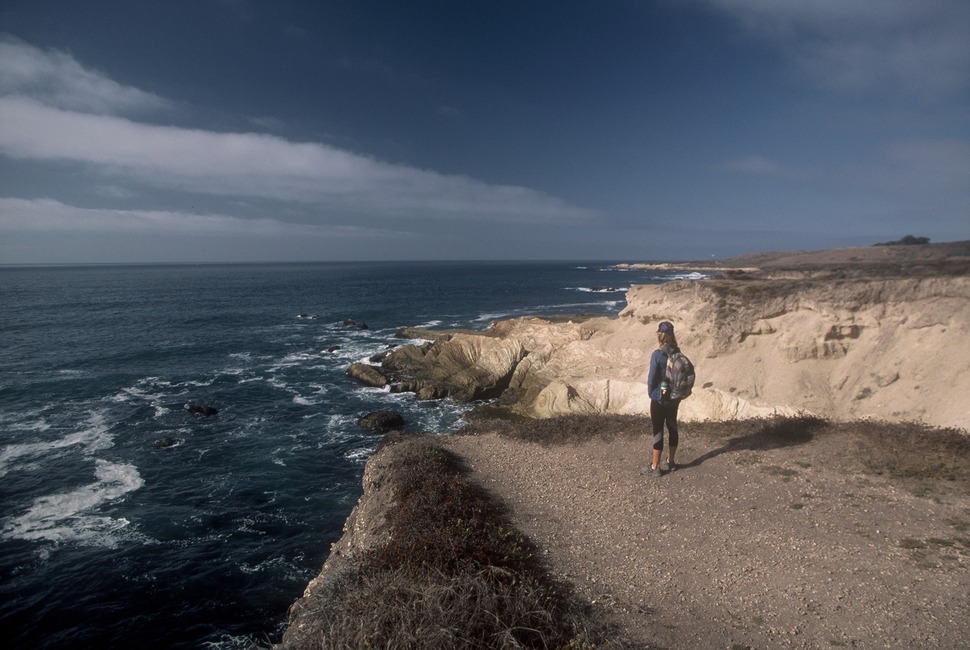
Point Buchon Trail
Water Time
I don’t think I’ve ever been to SLO without getting into the ocean at some point. There’s a lot to choose from, surfing its various breaks, standup paddling amongst southern sea otters in Morro Bay, or kayaking out of Port San Luis Harbor to the historic Point San Luis Lighthouse.
I made the historic choice and rented a kayak from Avila Beach Paddlesports. Located in Port San Luis, the easy launch was right off their dock, and before I knew it, I was congregating with sleepy sea otters wrapped in kelp, raucous California sea lions, and preening seabirds.
I paddled under the pier toward the elongated, wave-battered seawall. Where the coast and the seawall converged was a tiny pocket beach where I easily landed. From there, I took a short walk to the renovated lighthouse. Originally constructed in 1890, it was renovated in 1995.
It’s a great day trip, lunch spot, and a history lesson all in one. There are docent-led tours, but you’re permitted to walk the lighthouse grounds on your own if you make the easy paddle there.
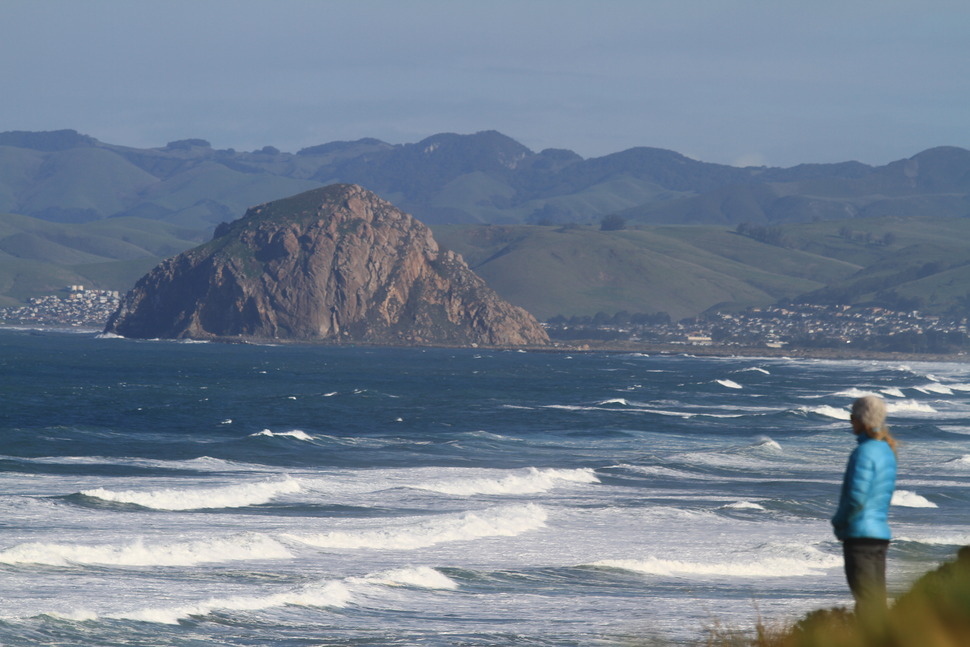
Montana De Oro State Park
I spent another early morning at nearby Montana de Oro State Park, which offered great, leg-burning hikes, trail runs, and mountain biking at what is arguably the most scenic stretch of the Central Coast. I traversed Valencia and the Bluff Trail Loop, where the moderate four-mile trek revealed many stunning vistas where I soaked in the incredible beauty of the Central Coast. From the trail’s apex, I even gazed north toward towering Morro Rock and beyond. Bonus: during minus tides, walk the coastal route where plenty of beach access delivers crazy good tide pooling in the teeming intertidal zone.
That early evening, I walked the glorious Guadalupe – Nipomo Sand Dunes National Wildlife Refuge for an epic sunset hike on the most intact coastal dune biome in California. The tallest dunes are 500-feet and tower over a turbulent Pacific Ocean. The dunes are works of art as they are constantly sculpted by perpetual northwest winds. Many times, I stopped and took a gander at these shifting sands where movies like the original Ten Commandments were filmed in 1923, and most recently Hidalgo in 2004, and Pirates of the Caribbean III in 2007.
Tolosa Winery
After leaving those shifting, wind-groomed works of art, I cruised back into downtown SLO. I veered away, just 10 minutes east of downtown to the vast Tolosa Winery and its sweeping vineyards. There, I enjoyed a sip of wine in the shade of a dense olive grove. Once again, I felt as if I’d been transported back to the Mediterranean, maybe somewhere in the heart of Italy?
Part of that was the mild, swirling microclimates that hover over SLO’s rolling hills and breathtaking Edna Valley. Cool, crisp Northwest Pacific winds and rich soils of surrounding ancient seabeds, and craggy limestone have contributed to the ripening of their stellar Pinot Noir and Chardonnay grapes.
After a full day reveling in SLO’s ruggedly beautiful coastline, I returned to the Granada, my ideal base to explore the county’s natural wonders, soak in its rich history and culture, and enjoy its fine cuisine. When I reached my warm, fire-lit room, I was already envisioning my next trip to San Luis Obispo.





